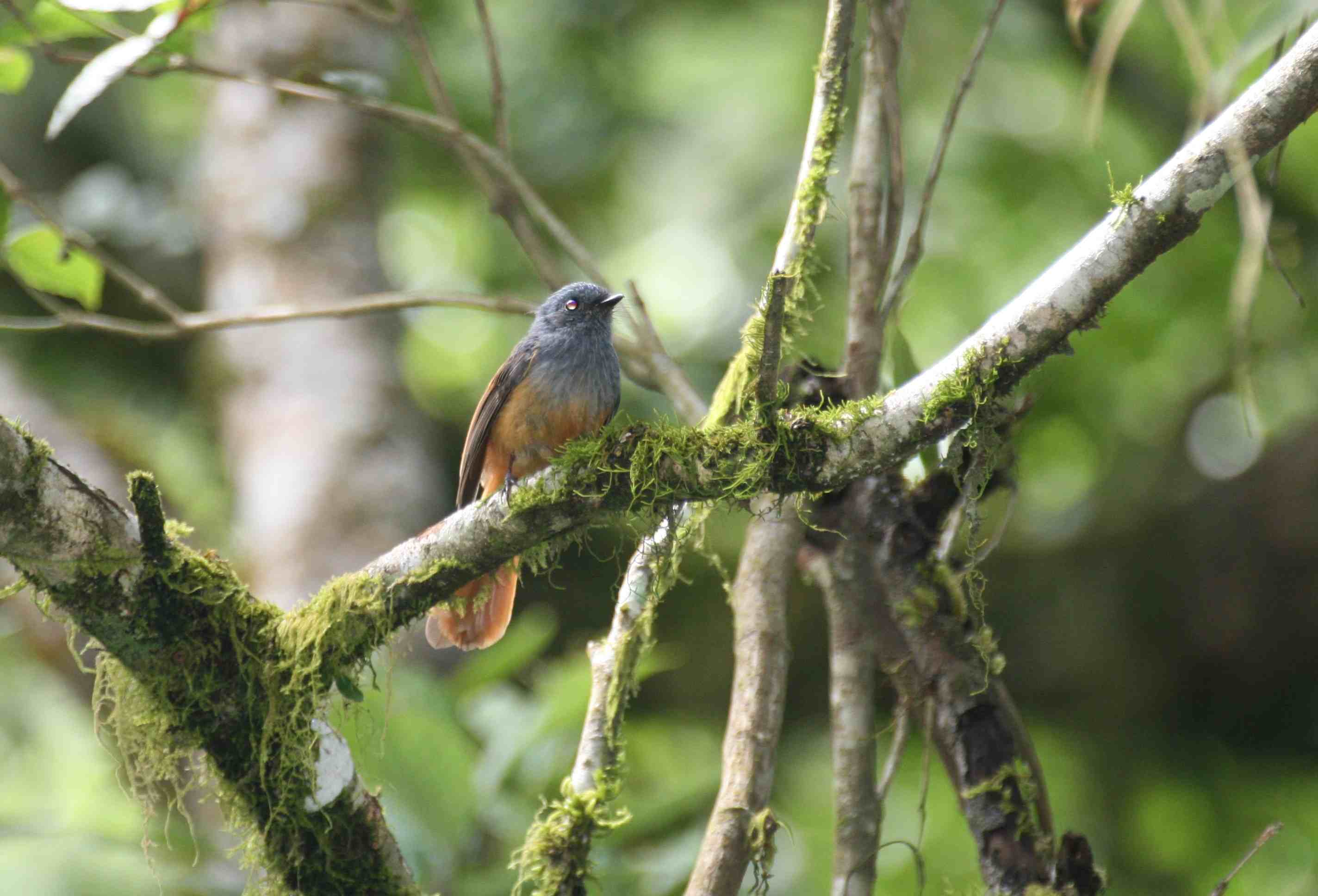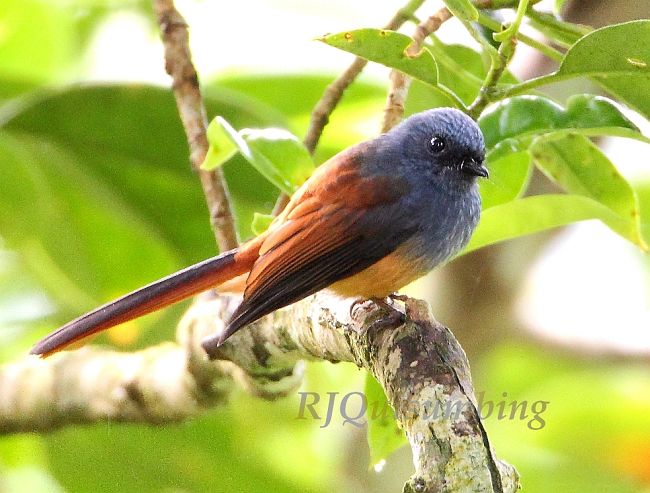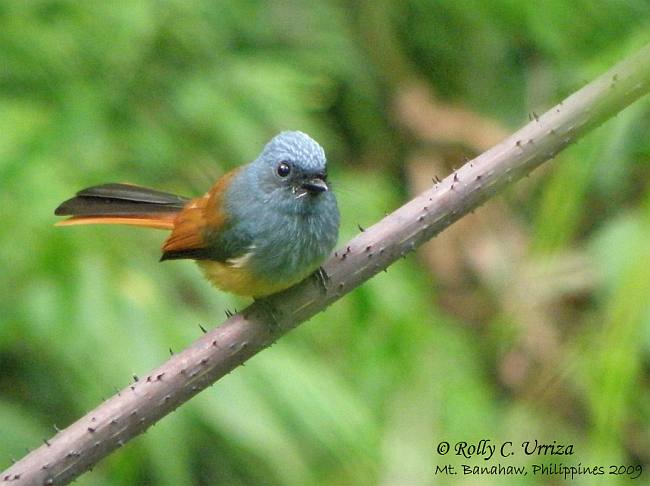
Rhipidura cyaniceps
TAXONOMY
Muscipeta cyaniceps Cassin, 1855, Mt Makiling, Luzon, Philippine
Islands. Four subspecies.
OTHER COMMON NAMES
French: Rhipidure а tкte bleue; German: Blaukopf-
Fдcherschwanz; Spanish: Cola de Abanico Azul.
PHYSICAL CHARACTERISTICS
6.5-7.5 in (16.5-19 cm). Head, throat, and breast grayish blue.
White brow and under eye stripe. Lower back, rump, and belly
to undertail is rufous. Black central tail feathers.
DISTRIBUTION
R. c. pinicola: northwest Philippine Islands; R. c. cyaniceps: northeast
Philippine Islands; R. c. sauli: western central Philippine Islands;
R. c. albiventris: eastern central Philippine Islands.
HABITAT
This species can be found in all forest types, up to 6,600 ft
(2,000 m).
BEHAVIOR
Usually found in family parties or mixed feeding flocks, this
fantail is a noisy and conspicuous bird in the understory of the
forest.
FEEDING ECOLOGY AND DIET
This species captures much of its insect food by hawking in the
upper canopy. It is a frequent member of mixed-species foraging
flocks.
REPRODUCTIVE BIOLOGY
Birds in breeding condition have been recorded in February
and March. Two eggs are laid in a cup-shaped nest built on a
branch.
CONSERVATION STATUS
Not threatened.
SIGNIFICANCE TO HUMANS
None known.
Photo Gallery of - Blue-headed fantail




 Animalia Life
Animalia Life